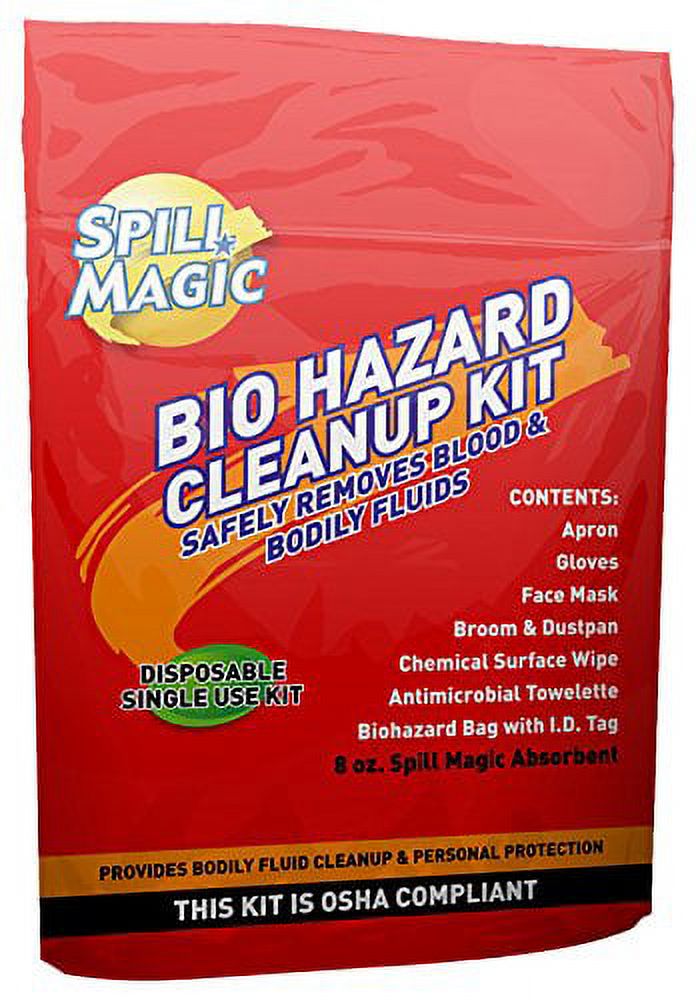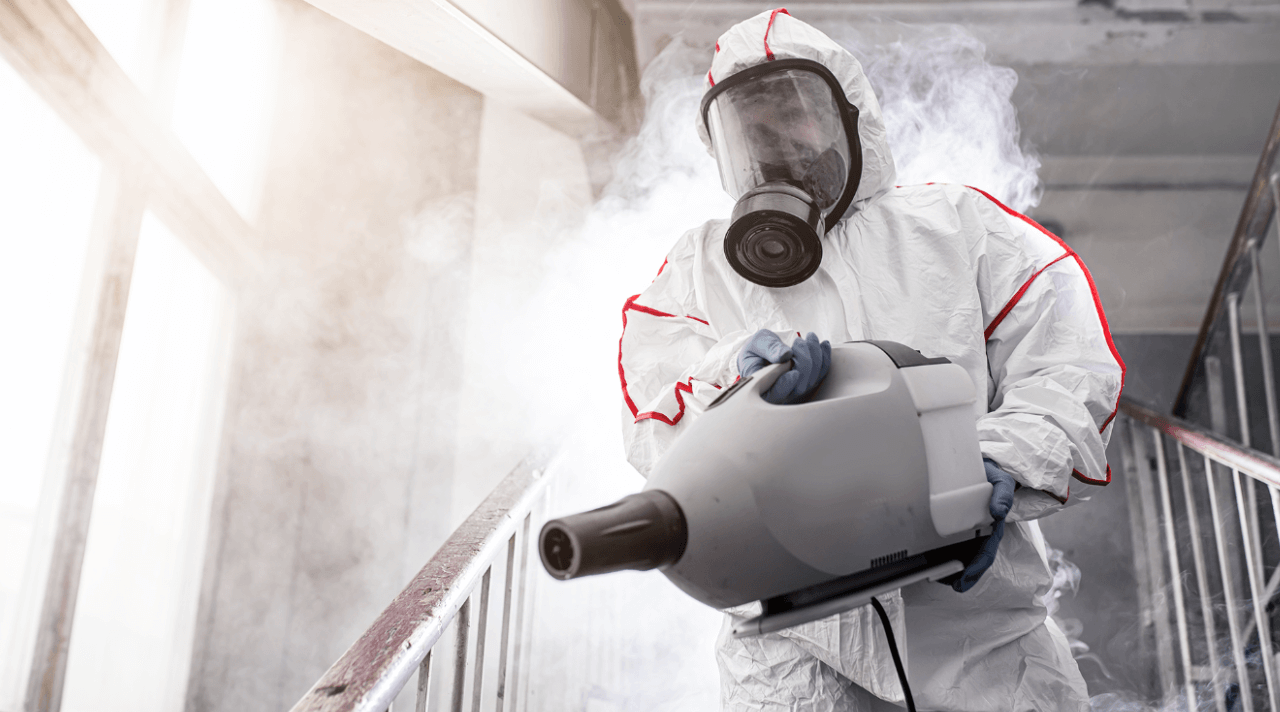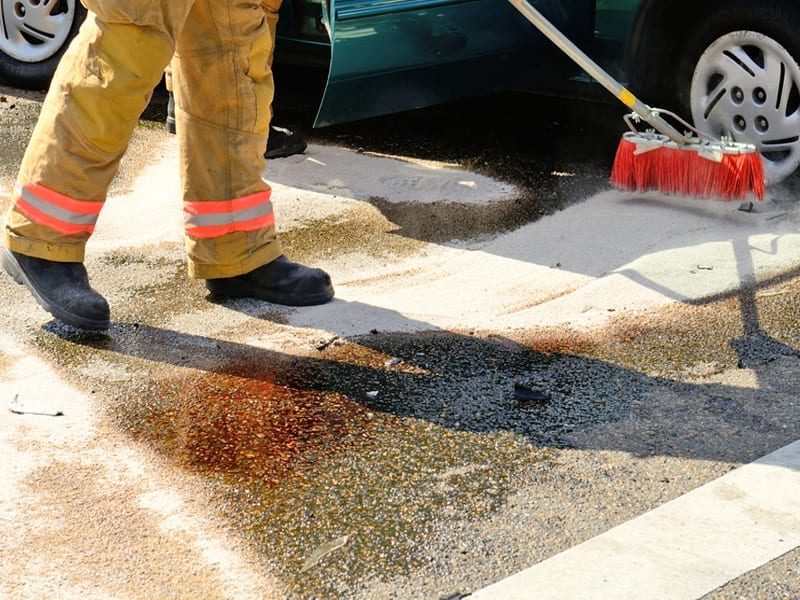Professional Blood Cleanup: Making Sure Safe and Thorough Purification
Professional Blood Cleanup: Making Sure Safe and Thorough Purification
Blog Article
Specialist Biohazard Clean-up for Crime Scenes, Trauma Incidents, and Infected Rooms
In the realm of professional biohazard cleaning, meticulous attention to detail and adherence to safety protocols are vital. When confronted with the after-effects of a crime scene, trauma event, or any type of contaminated area, the significance of appropriate cleaning can not be downplayed. The threats and intricacies linked with biohazards call for customized knowledge and competence to guarantee effective remediation. As we explore the complexities of biohazard cleaning for these delicate environments, a much deeper understanding of the challenges and crucial treatments entailed will emerge, clarifying the vital role of expert cleaning services in recovering security and comfort.

Relevance of Biohazard Cleaning
Biohazard cleaning following crime scenes and injury cases is crucial for ensuring the security of individuals and the atmosphere. When these cases take place, they typically leave behind a variety of biohazards such as blood, physical fluids, and other potentially contagious materials. These compounds can harbor unsafe microorganisms like bacteria and viruses, presenting severe health risks otherwise effectively cleaned up and sanitized.
Professional biohazard cleanup services are educated to take care of these dangerous products safely and properly. They have the necessary equipment, such as personal protective equipment and specialized cleansing representatives, to extensively sanitize the influenced locations. By turning over the clean-up to qualified experts, individuals can prevent direct exposure to damaging virus and stop the spread of transmittable illness.
In addition, appropriate biohazard cleanup is crucial for securing the environment. Improper disposal of biohazardous materials can pollute dirt, water sources, and air, posing a risk to wildlife and the ecological community. By adhering to rigorous cleanup protocols, professionals can make certain that biohazards are securely eliminated and taken care of according to laws, decreasing the threat of environmental contamination.
Sorts Of Biohazards Encountered
Different unsafe products generally run into in crime scenes and trauma cases present substantial health threats otherwise dealt with correctly. Blood and physical liquids are amongst the most common biohazards located in these scenarios. These liquids can lug microorganisms such as HIV, liver disease B and C, and other dangerous microbes. In addition, tissues, organs, and body components can likewise pose significant health risks as a result of possible contamination.
One more kind of biohazard typically run into is sharp items like needles, busted glass, and various other products that can trigger injuries and transfer infections. Chemical threats are also an issue, as criminal activity scenes might consist of substances like tear gas, pepper spray, or drug production products that need customized handling and disposal treatments to stop additional injury.
Furthermore, mold and mildew and bacteria growth can occur precede where decomposition or prolonged exposure to wetness has happened. These microbes can launch toxic substances and allergens right into the air, posing breathing risks to those subjected. On the whole, biohazard cleanup professionals have to be qualified and fully equipped to successfully manage these various sorts of dangerous materials to make sure the security of themselves and others.
Tools and Safety Gear
When attending to the crucial job of handling biohazards experienced in criminal offense scenes and injury events, the use of proper equipment and safety gear is paramount to guaranteeing the security of individuals associated with the cleanup procedure. Individual safety equipment (PPE) such as gloves, masks, goggles, and coveralls are important to protect against direct contact with possibly hazardous substances. Respirators are critical when dealing with biohazards that might end up being air-borne, securing employees from breathing in harmful fragments. Specialized cleaning tools like biohazard bags, sharps, and anti-bacterials containers are needed for the risk-free collection and disposal of contaminated products. In addition, heavy-duty devices such as industrial-grade cleaner, foggers, and ozone generators may be required to completely sanitize the afflicted area. Making certain that all devices is properly preserved, consistently checked, and made use of according to safety and security guidelines is essential in reducing the danger of exposure to biohazards throughout cleanup operations.
Cleanup Process and Techniques
Detailed and reliable cleanup of biohazardous materials from crime scenes and injury incidents needs careful interest to detail and adherence to rigorous safety and security procedures. The cleanup procedure typically involves a number of vital steps. Initially, the location needs to be evaluated to establish the extent of contamination and the appropriate cleaning methods needed. Next, all biohazardous products, consisting of blood, physical decomposition death clean up liquids, and tissue deposits, must be carefully eliminated and disposed of according to neighborhood regulations.
Following the removal of biohazardous products, the afflicted location goes through a complete cleaning and sanitation procedure. This step involves making use of specialized cleaning up representatives and devices to ensure that all traces of contamination are removed. After cleansing, the location goes through extensive testing to validate that it is complimentary and risk-free of any type of remaining biohazards.

Purification and Disposal Procedures
To ensure comprehensive purification and appropriate disposal of biohazardous products, adhering to the precise cleanup procedure, specific treatments must be meticulously followed with stringent adherence to safety protocols. Purification entails the removal or neutralization of impurities to decrease the risk of exposure and spread of hazardous compounds. This procedure normally includes cleansing, disinfecting, and sanitizing the affected area utilizing customized devices and EPA-approved chemicals.
Once purification is finished, correct disposal of biohazardous products is vital to avoid further contamination or damage. Biohazardous waste, such as physical liquids or blood-soaked products, need to be thoroughly gathered, packaged, and labeled according to regulative standards. ATP testing. These products are after that transported to accredited facilities for disposal with appropriate networks, making certain compliance with regional, state, and government guidelines

Conclusion
In verdict, expert biohazard cleanup is essential for making certain the reliable and safe removal of dangerous materials from criminal offense scenes, trauma cases, and polluted spaces. By using specialized tools, safety equipment, and following proper cleaning procedures and strategies, biohazard cleaning groups can successfully sanitize and dispose of biohazards, minimizing the risk of exposure and harm to people and the setting.
As we delve right into the intricacies of biohazard clean-up for these delicate settings, a much deeper understanding of the challenges and crucial procedures involved will arise, dropping light on the crucial duty of expert cleaning services in restoring security and peace of mind.
Professional biohazard cleanup solutions are educated to handle these harmful products securely and properly. By following strict cleaning protocols, professionals can make sure that biohazards are securely removed and disposed of in accordance with policies, lessening the danger of ecological contamination.
On the whole, biohazard clean-up experts have to be skilled and fully equipped to properly handle these numerous types of hazardous products to make certain the safety and security of themselves and others.
When resolving the crucial task of taking care of biohazards experienced in criminal offense scenes and trauma cases, the use of appropriate devices and safety equipment is critical to guaranteeing the safety of individuals included in the cleaning procedure.
Report this page